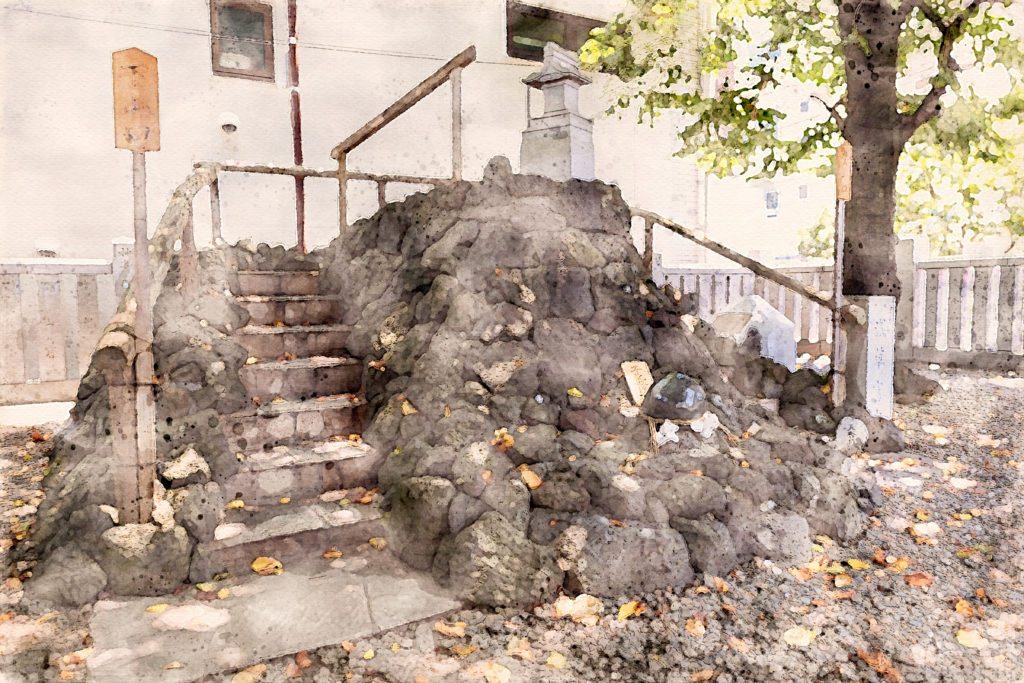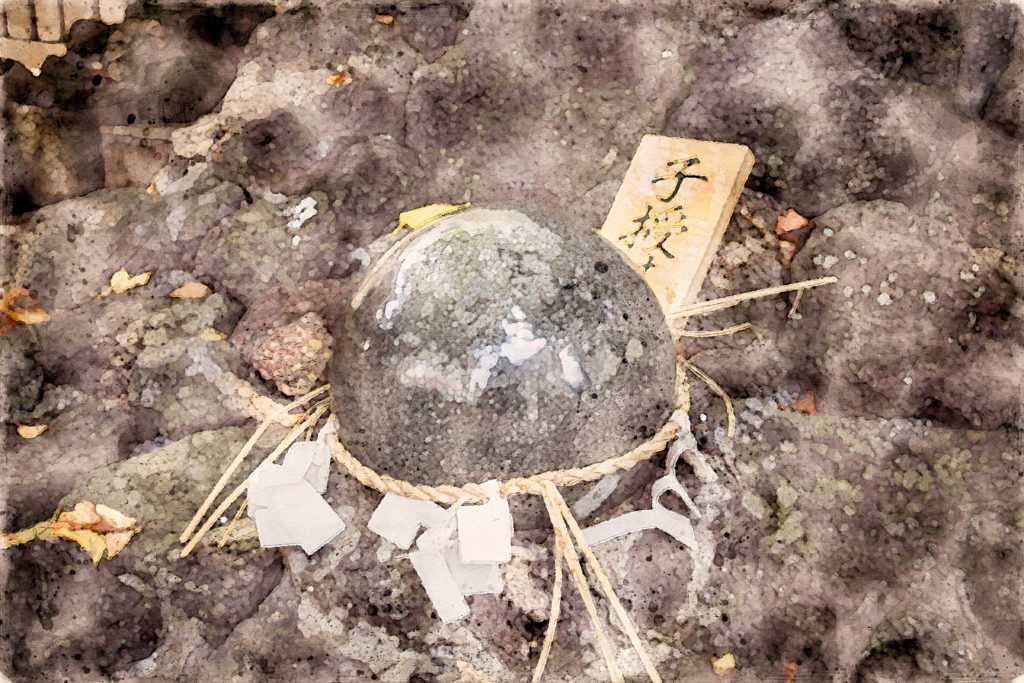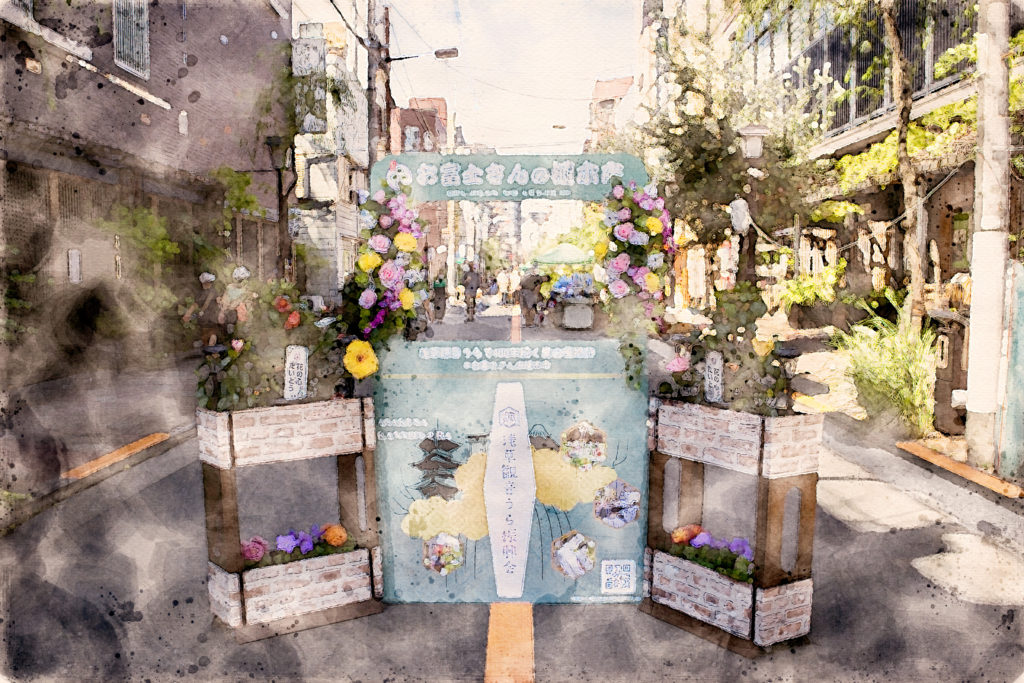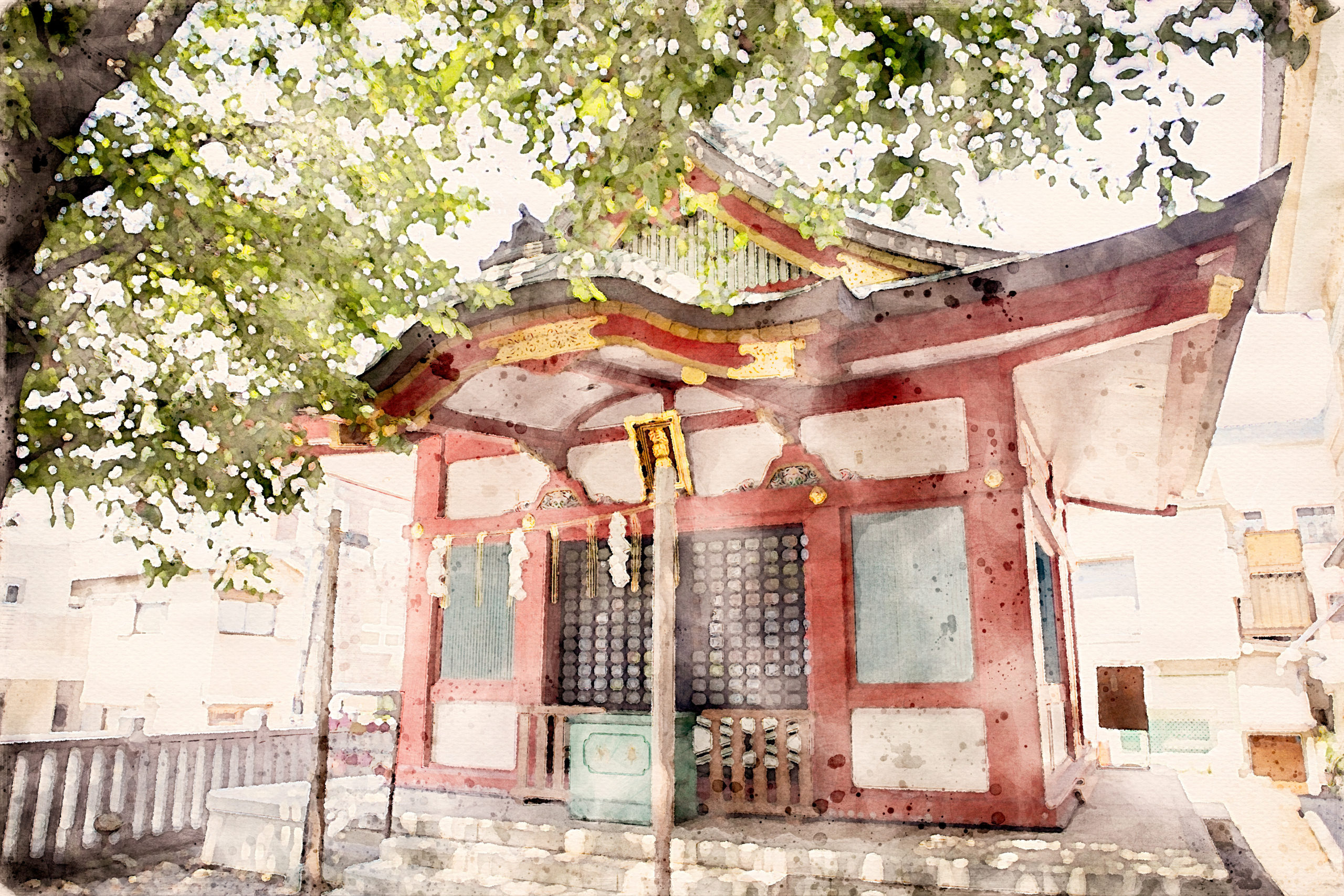The “Shrines and Temples” category of the Tokyo Shitamachi Guide presents Shinto shrines and Buddhist temples in Tokyo’s Shitamachi area, which is the area along and east of the Sumida River.
Each time, we recommend an engaging location for your sightseeing experience in Tokyo. In this article, we will focus on Asakusa Fuji Sengen Shrine, a Shinto shrine in Asakusa, Taito Ward.
Asakusa Fuji Sengen Shrine is affiliated with Asakusa Shrine. This shrine is located a 5-minute walk away from Asakusa Shrine but is managed by Asakusa Shrine.
Asakusa Fuji Sengen Shrine is also known as O-Fuji-San (Lady Fuji). And there was also a time when people called this shrine Fuji Gongen (the goddess of Mt. Fuji).
As a part of the annual celebration of Asakusa Fuji Sengen Shrine, the surrounding neighborhood organizes a plant fair known as “O-Fuji-San no Ueki-Ichi” on the last Saturday and Sunday of May and June.
Along with the Hydrangea Festival at Chokokuji Temple, this plant fair has become a cherished early summer tradition in the Asakusa area.
This article will provide clear and easy-to-understand information on various topics related to Asakusa Fuji Segnen Shrine, including:
- Historical background
- Enshrined deities
- Highlights
- Transportation options
- etc.
Reading this article will help you gain a better understanding of Asakusa Fuji Sengen Shrine. You can use it as a reference when you visit the shrine.
This article is also available in Japanese. You can access it at the following link:
For more information about Asakusa Shrine, please refer to the following article:
History
According to Asakusa Fuji Sengen Shrine, its exact origin is unknown. But it is believed that this shrine has existed since at least the 17th century.
A long time ago, there was a person named Ikeda Sadatsune. He was a feudal lord of the Wakasa clan in Inaba Province, which is now the eastern part of Tottori Prefecture. And Ikeda Sadatsune was highly regarded as a literary figure.
In 1820, Ikeda Sadatsune issued a book titled Sensoji-Shi, which is about Sensoji Temple and its surrounding area.
Ikeda Sadatsune included Kanbun Juichinen Edo Ezu in his publication. This is a map of Edo, present-day Tokyo, around 1671.
You can find Asakusa Fuji Sengen Shrine on that old map. Therefore, this shrine is considered to have existed by at least 1671, which is the early Edo period.
During the Edo period, Shuzenin Temple managed Asakusa Fuji Sengen Shrine. This Buddhist temple was a subsidiary temple of Sensoji Temple and was located in the precincts of Sensoji Temple.
In 1868, the Meiji government issued the Shinbutsu Bunri policy. This policy attempts to eliminate any Buddhist influence on Shintoism.
This policy didn’t allow Shuzenin Temple, the Buddhist temple, to manage Asakusa Fuji Sengen Shrine, the Shinto shrine any more.
In 1837, Asakusa Shrine took over the management of Asakusa Fuji Sengen Shrine from Shuzenin Temple.
The Enshrined Deity
Konohanasakuya-Hime
Asakusa Fuji Sengen Shrine is dedicated to Konohanasakuya-hime. This Shinto deity is a very beautiful goddess, symbolizing Mt. Fuji. It is said that the word “Sakura” originated from her name.
Konohanasakuya-hime is the deity of safe childbirth and child rearing. The blessings associated with this deity include:
- Fire calamity prevention
- Safe delivery
- Pregnant
- etc.
Highlights
Fujizuka

Asakusa Fuji Sengen Shrine provides Fujizuka in its precincts. Fujizuka is an artificial mountain or mound that imitates Mt. Fuji.
From the 17th century to the 20th century, Fujiko gained popularity among the commoners in Edo (present-day Tokyo). Fujiko is a folk religion that worships Mt. Fuji.
The activities of Fujiko include climbing Mt. Fuji. However, for the residents of Edo during that time, traveling to Mt. Fuji was quite challenging. As an alternative, they would visit Fujizuka, located in their local area.
The original Fujizuka at Asakusa Fuji Sengen Shrine was lost during World War II. The current Fujizuka was reconstructed in 2016.

O-Fuji-San no Ueki-Ichi

Every year on July 1st, the climbing season for Mount Fuji begins. To commemorate this day, Asakusa Fuji Sengen Shrine holds its annual ceremony.
As part of this yearly celebration, the surrounding neighborhood organizes a plant fair called “O-Fuji-San no Ueki-Ichi“. This plant fair takes place on the last Saturday and Sunday of May and June.
During O-Fuji-San no Ueki-Ichi, you can find numerous gardeners and food stalls lining Asakusa Yanagi-dori street and Ichiyozakura/Komatsubashi-dori street.
Along with the Hydrangea Festival at Chokokuji Temple, O-Fuji-San no Ueki-Ichi has become a cherished early summer tradition in the Asakusa area.
According to Asakusa Shrine, this plant fair attracted about 300,000 visitors in 2008.

Other Useful Information
Opening Hours
- Basically unmanned except for the new year’s holidays, the annual ceremony day, and O-Fuji-San no Ueki-Ichi.
TEL
- 03-3844-1575 (Asakusa Shrine)
Address
- Asakusa 5-3-2, Taito-ku, Tokyo 111-0032
Google Map
Public Transport (Train)
- 10-minute walk from Asakusa Station (Exit 6) on the Ginza Line
- 10-minute walk from Asakusa Station (The Central Exit) on the Asakusa Line
- 13-minute walk from Asakusa Station (Exit 6) on the Tobu Isesaki Line (a.k.a. the Tobu Skytree Line)
- 15-minute walk from Asakusa Station (Exit A1) on the Tsukuba Express Line
Public Transport (Megurin Bus)
- 1-minute walk from Asakusa Keisatsusho-Mae Stop (Stop #20) on Megurin North Route (via Asakusa)
Megurin Bus is a community bus operated by Taito Ward of Tokyo. We recommend you try the Megurin Bus when you visit Taito Ward. That’s because the Megurin Bus will take you to almost any place in the ward for a less expensive fare.
For more information about Megurin Bus, please refer to the following article:
Public Transport (Toei Bus)
- 2-minute walk from Asakusa Keisatsusho-Mae Stop on Route 草 64 (Kusa 64)
Public Restroom Availability
- No. But there is one in Fuji Park behind the Asakusa Police Department.







